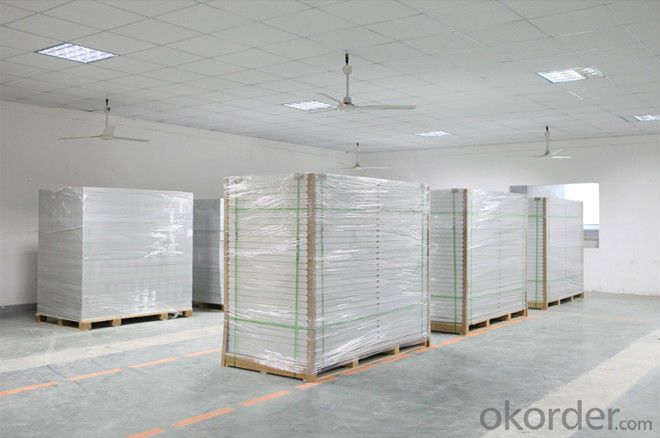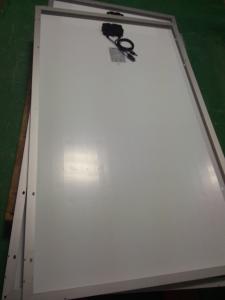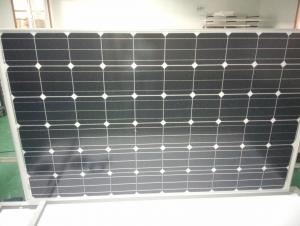Solar Panel(100w mono) with TUV and UL Certification
- Loading Port:
- Shanghai
- Payment Terms:
- TT or LC
- Min Order Qty:
- -
- Supply Capability:
- 3000pcs watt/month
OKorder Service Pledge
OKorder Financial Service
You Might Also Like
Mechanical Characteristics
Max-power Pm(W) 100
Max-power voltage Vmp(V) 17.1
Max-power current Imp(A) 5.85
Open-circuit voltage Voc(V) 21.6
Short-circuit current Isc(A) 6.64
Dimension(mm) 1252*670*30
Weight(kg) 8.3
Operating Conditions
Operating Temperature -40~85°c
Storage Temperature -40~85°c
Maximum system voltage DC 1000V
Characteristics:
I.Solar Cell : High efficiency crystalline solar cell. Even if under the weak light, the solar module can produce maximum power output.
II.Tempered glass (toughened glass): Anti-reflecting coating and high transmission rate glass increase the power output and mechanical strength of solar module.
III.EVA and TPT: Using high quality EVA and TPT to prevent destroying and water.
IV.AI frame: Without screw, corner connection. 6 holes on the frame can be installed easily.
V.Junction box: Multi function junction box with water proof.
VI.Long lifetime: ≥25 years; Less power decrease.
VII.Good performance of preventing from atrocious weather such as wind and hails.
VIII.Resisting moisture and etching effectively, not effected by geology.
IX.The certificate issued by international authority: UL, TUV, IEC, VDE, CE
Temperature and Coefficients
NOCT 48± 2°c
Temperature coefficient of Voc(%/K) -0.34
Temperature coefficient of Isc(%/K) 0.09
Power temperature coefficient(%/K) -0.37
Quality and Warranty
--Peak power of single module is guaranteed in±3% power tolerance
--3 years limited warranty on material and workmanship
--Limited power warranty:10 years 90% and 25 years 80% limited warranty for minimum power output
Package Picture


FAQ
I. Will you focus on the safety of the goods during transportation?
Yes, Safety of the cargo is the primary element that we would consider on transportation.
II..How would guarantee the quality will meet the requirements of your clients?
Before shipment, we will have inspection for each batch of goods.
III..What certificates do you have?
IEC,UL,TUV,CSA,etc.
IV..Can you do OEM according to clients’ requirements?
Yes, we have our own brand while we can provide OEM service.
- Q:My family and I are looking into solar panels for our home. But I'm unsure how it would be priced. This month our home used ,623 kwh. The solar panel company said we should expect $6-$9 per watt used. What would that put as at?
- With out doing the math,, I think I would ask the solar panel company to explain it to you as they are trying to sell it to you. And see if you have some sort of warranty of savings. Make them work for the sale!!
- Q:Can solar panels power a whole house?
- Yes, solar panels can power a whole house depending on the size of the solar panel system, the energy requirements of the house, and the amount of sunlight available in the area. A properly sized solar panel system can generate enough electricity to meet the needs of a typical household, reducing or even eliminating the reliance on the traditional power grid.
- Q:hey so im doing this project for my technology class and i was wondering what different colours solar panels can be. also is it possible to have kentic power as a back up power if batteries dont work? thx in advance
- I have only seen solar panels in a dark blue because of the material they are made of. Now the case can be any color I guess but aluminum (silver) seems to be common.
- Q:im interested in starting a solar panel manufacturing company. ive researched on how to make them and it doesnt look too hard, and is definitely something i can figure out. i would be starting from nothing so my question is what are the chances of me actually selling a lot of panels and the business actually succeding?thanks
- At this very moment, most of the people already have an idea on how to create their own solar panels, And creating your own company takes a lot of necessities such as permits ans other stuffs like that,.
- Q:Why is it nessicary, with today's economy in the postion it's currently in, to use renewable energy sources; like solar panels?
- well you can save money over time even though the initial costs are quite high. Solar PV will allow you to not be subject to electrical rate inflation, which is averaging at about 6% per year. Solar also is better for the environment, so it gives you piece of mind.
- Q:By best I mean safest places. If I were to install them on my roof am I risking due to damage from weathering? Such as rain or snow. I don't get very high winds around here, nor any natural disasters such as hurricanes or tornadoes. Does anyone have solar panels that have been durable for a long time? Is it worth the investment?
- The best place is where they get the most sunshine. Naturally they will be exposed to rain and snow.
- Q:Say if i had a 2KW system is thtat just one big solar panel or does the whole system have little solarpanels together.?
- As Aviophage says, there is plenty of info around. Solar panels produce electrical energy from the sunlight's energy. The sun puts out around 00W per square meter, and the panels are up to 20% efficient at converting this. If you are looking for a Grid Connected power system, they are usually made up of 24V modules about 50W each. The full voltage produced is then around 50V to 500V DC depending on the sun etc. They are connected to a specialised grid connect or grid interactive inverter (look up Sunny Boy for an example) which converts this to mains power for use around the house, while any remainder is exported to the supply network. The supply company may buy this at premium rates, and governments may provide subsidies to approved installations. There may also be carbon credit certificates when you buy a system. Not all places allow such things to be connected to the grid, but this market is rapidly changing. The links below should get you started.
- Q:What is the difference between on-grid and off-grid solar systems?
- The main difference between on-grid and off-grid solar systems lies in their connection to the traditional electrical grid. On-grid solar systems are connected to the grid, allowing them to both generate and consume electricity from the grid when needed. They can also feed excess electricity back into the grid, earning credits or compensation through net metering. In contrast, off-grid solar systems are not connected to the grid and operate independently, relying solely on solar energy to generate and store electricity in batteries for use when the sun is not shining. Off-grid systems are typically used in remote areas where grid connection is not available or for those seeking complete energy independence.
- Q:Can solar panels be used in deserts?
- Yes, solar panels can definitely be used in deserts. In fact, deserts are considered ideal locations for solar power generation due to their high solar irradiance and vast open spaces. The availability of ample sunlight allows solar panels to efficiently convert sunlight into electricity. Additionally, deserts often have less cloud cover and atmospheric interference, resulting in more consistent and predictable solar energy production.
- Q:Ok, so my homework was to research and write about how solar panels and solar furnaces work and about their construction. We didn't even take one lesson on it in class and we are not allowed to copy and paste much and have to keep it simple wtf? Its soo annoying as we have hardly took it in class. Please can someone help.
- Well solar panels conduct electricity from the suns waves and turns it into dc current then it is either put into a grid tie inverter to change it to AC and it makes you meter go backwards instead of forwards. or if its not a grid tie inverter it is just put into batteries as dc then changed into AC from the inverter and then used for household appliances. nothing really does run on DC that is why it has to be changed. and for solar furnaces if you mean a water heater that works by a substance here in Pa its antifreeze is heated up by the sun in the panel it is in a continous loop and that is what gets heated up the water then flows over tow of the tube that contains what ever substance such as antifreeze and heats the water.were the water and the tube that changes the water from cold to hot is called the heat exchanger. the substance is actually get heated first then the water. solar heating for water accounts for 29% of water heating in the us. Now if you mean solar furnace as in passive solar thats completely different because here in Pa if we want it our houses have to face to south to get the suns rays. (alot more windows) and there is a cement slab placed only on the south side of the house and it has insulation covering it. There is a certain type of glass that is used for this that will allow the suns rays to come in and let the heat in for the summer and also for the winter. the main place for that would mostly be the first floor of the house due to the height of the windows and the angle of the sun(pa in the summer is 73 degrees and in the winter its 27 degrees) thats when the second floor would be ok to heat the rooms. Hopefully i helped and i explained it in a way that you can understand.
1. Manufacturer Overview |
|
|---|---|
| Location | |
| Year Established | |
| Annual Output Value | |
| Main Markets | |
| Company Certifications | |
2. Manufacturer Certificates |
|
|---|---|
| a) Certification Name | |
| Range | |
| Reference | |
| Validity Period | |
3. Manufacturer Capability |
|
|---|---|
| a)Trade Capacity | |
| Nearest Port | |
| Export Percentage | |
| No.of Employees in Trade Department | |
| Language Spoken: | |
| b)Factory Information | |
| Factory Size: | |
| No. of Production Lines | |
| Contract Manufacturing | |
| Product Price Range | |
Send your message to us
Solar Panel(100w mono) with TUV and UL Certification
- Loading Port:
- Shanghai
- Payment Terms:
- TT or LC
- Min Order Qty:
- -
- Supply Capability:
- 3000pcs watt/month
OKorder Service Pledge
OKorder Financial Service
Similar products
New products
Hot products
Related keywords































